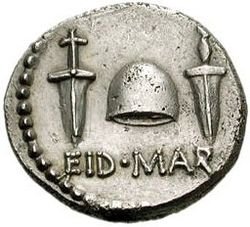The Million-Dollar Club: Ancient Coins That Broke Auction Records
When a single coin sells for more than a luxury penthouse, you know numismatics has entered the big leagues. I’ve tracked these record-breaking sales for years, and the stories behind them are even more fascinating than the price tags. Let’s examine the most expensive ancient coins ever sold—and why collectors are willing to pay fortunes for them.
What Makes an Ancient Coin Worth Millions?
Before we dive into the list, understand these key value drivers:
✅ Historical Significance – Was it held by Caesar? Used to pay legionaries?
✅ Artistic Mastery – Some Greek coins are miniature sculptures.
✅ Rarity – Only 3 known? Expect a bidding war.
✅ Provenance – Formerly owned by royalty or famous collectors? Huge premium.
Fun Fact: The most expensive coin per gram? The EID MAR aureus—$520,000 per gram of gold!
The Top 10 Most Expensive Ancient Coins
(All prices are hammer prices, excluding fees)
1. The “EID MAR” Aureus of Brutus (42 BC) – $4.2 Million
-
Why? It’s the ultimate “I killed Caesar” flex.
-
Details:
-
Obverse: Brutus’ stern face (rare for a living Roman)
-
Reverse: Two daggers and a liberty cap (symbolizing the Ides of March)
-
-
Backstory: Only 3 exist. This one was found in a 2020 hoard.
2. Athens Decadrachm (5th Century BC) – $2.92 Million
-
Why? The Mona Lisa of Greek coins.
-
Details:
-
Size: A massive 42.5g of silver (most Greek coins were ~17g)
-
Artistry: Athena’s helmet crest has microscopic detailing
-
-
Fun Fact: These were likely Olympic victory medals.
3. Naxos Tetradrachm (Sicily, 5th Century BC) – $2.4 Million
-
Why? Dionysus has never looked better.
-
Details:
-
Obverse: Drunken Dionysus with ivy crown
-
Reverse: Silenus (his mentor) chugging wine
-
-
Collector’s Note: Only 7-10 known examples.
4. Panticapaeum Gold Stater (Crimea, 4th Century BC) – $1.8 Million
-
Why? Satyr + griffin = numismatic magic.
-
Details:
-
Minted by: A Greek colony in modern Ukraine
-
Metal: Ultra-pure gold (no debasement here)
-
5. Akragas Decadrachm (Sicily, 5th Century BC) – $1.5 Million
-
Why? The chariot scene looks like it’s moving.
-
Details:
-
Reverse: An eagle mid-swoop, claws gripping a hare
-
Historical Context: Minted to celebrate a military victory
-
The “Almost” Club: Coins That Nearly Hit $1M
-
Hadrian’s “Restitutor Hispaniae” Aureus ($1.3M) – Celebrates his Spanish tour
-
Tiberius’ Tribute Penny ($1.2M) – The Bible’s famous “Render unto Caesar” coin
-
Constantine’s Solidus ($1.1M) – The first Christian Roman emperor’s gold
Shocking Omission: No Cleopatra coins? Her portraits are incredibly rare—only 1-2 confirmed exist.
How Do These Compare to Modern Coins?
| Coin | Price | Equivalent To |
|---|---|---|
| EID MAR aureus | $4.2M | 3 Bugatti Chirons |
| Athens decadrachm | $2.92M | A Manhattan condo |
| Naxos tetradrachm | $2.4M | A private island in Belize |
Key Difference: Ancient coins have 2,000+ years of history. A 1933 Double Eagle is “just” gold.
Could You Find One of These?
Realistically? No. But here’s what’s attainable:
-
Roman bronzes: 50–500 (great for beginners)
-
Silver denarii: 200–2,000 (Hadrian’s are popular)
-
Greek drachms: 500–5,000 (Athenian owls are iconic)
Pro Tip: Focus on well-preserved coins. A “Fine” Tiberius denarius is 300;an”ExtremelyFine”oneis3,000.
The Future of Ultra-Rare Coins
As wealth grows in Asia and the Middle East, demand (and prices) will keep rising. The next record-breaker? Possibly:
-
A Cleopatra portrait coin (if another surfaces)
-
A perfect Alexander the Great decadrachm
-
A previously unknown Roman imperial issue
My Prediction: We’ll see a $10M ancient coin within a decade.
Final Thought
These coins aren’t just metal—they’re time machines. When you hold an EID MAR aureus, you’re touching the same gold Brutus used to pay his assassins. That connection to history? Priceless.
For serious collectors: CNG, Roma Numismatics, and Heritage Auctions handle most record sales.
